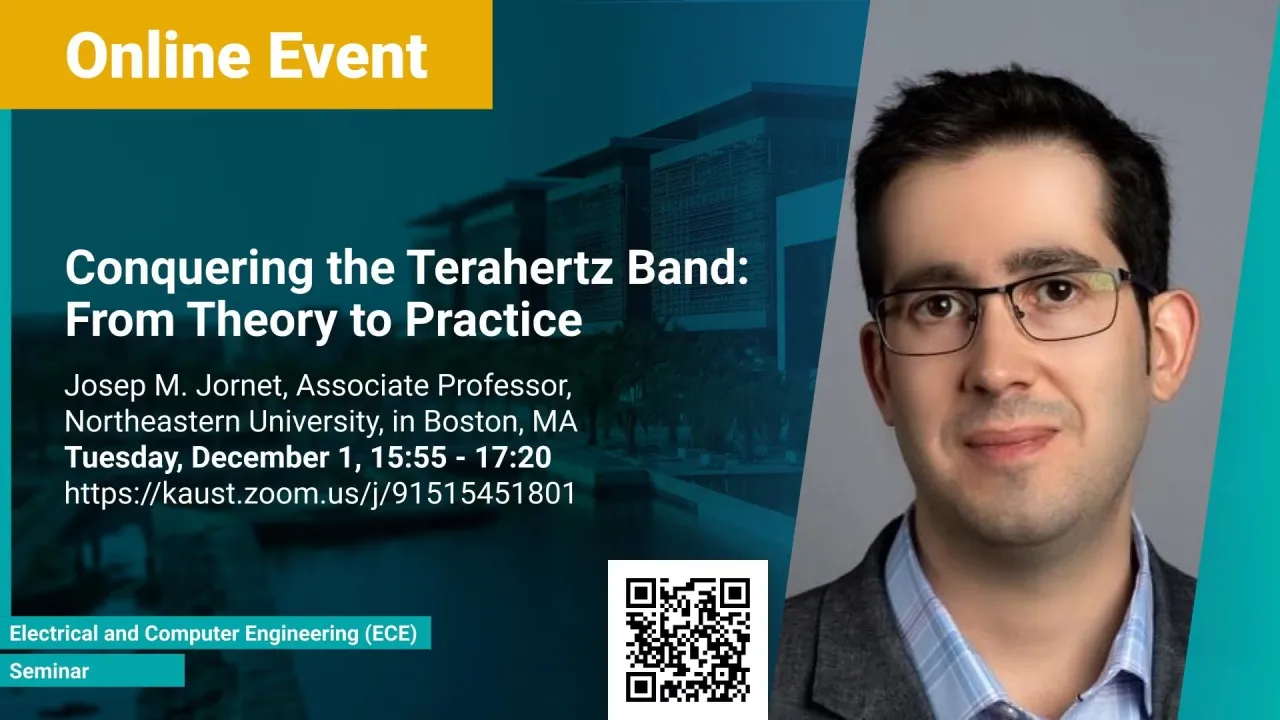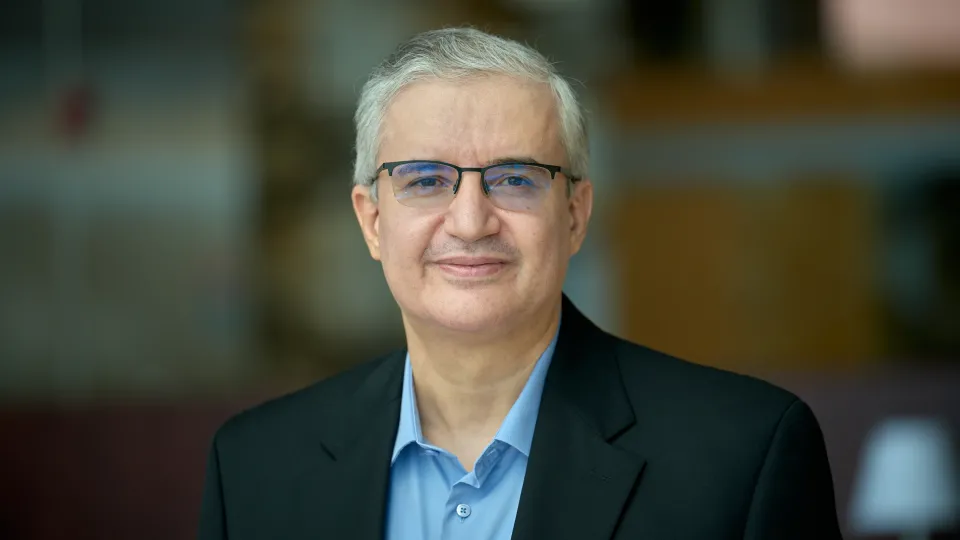
Conquering the Terahertz Band: From Theory to Practice
- Prof. Josep M. Jornet, Northeastern University, in Boston, MA
KAUST
The need for higher data-rates and more ubiquitous connectivity for an ever-increasing number of wirelessly connected devices motivates the exploration of uncharted spectral bands. In this context, Terahertz (THz)-band (0.1–10 THz) communication is envisioned as a key wireless technology of the next decade. The very large bandwidth available at THz frequencies (tens to hundreds of consecutive GHz) can alleviate the spectrum scarcity problem while enabling wireless Terabit-per-second (Tb/s) links in personal and local area networks, backhaul for urban and rural areas, and even space networks.
Overview
Abstract
The need for higher data-rates and more ubiquitous connectivity for an ever-increasing number of wirelessly connected devices motivates the exploration of uncharted spectral bands. In this context, Terahertz (THz)-band (0.1–10 THz) communication is envisioned as a key wireless technology of the next decade. The very large bandwidth available at THz frequencies (tens to hundreds of consecutive GHz) can alleviate the spectrum scarcity problem while enabling wireless Terabit-per-second (Tb/s) links in personal and local area networks, backhaul for urban and rural areas, and even space networks. Moreover, the very small size of THz transceivers and antennas (submillimetric at THz frequencies) leads to miniature communication devices with applications in wireless networks on chip, wireless nanosensor networks, and the Internet of Nano-Things, to name a few. Nevertheless, several roadblocks need to be overcome to tap in the THz band, ranging from the lack of high-power THz sources, high sensitivity detectors, and steerable directional antenna systems, to advanced signal processing, communication, and networking techniques that can make the most of the ultra-broadband THz channel while overcoming the challenging propagation characteristics of THz waves. In this talk, the state of the art and open challenges to enable THz communication systems will be presented, with a special emphasis on innovative platforms for experimental THz research.
Brief Biography
Josep M. Jornet is an Associate Professor in the Department of Electrical and Computer Engineering at Northeastern University, in Boston, MA. He received the B.S. in Telecommunication Engineering and the M.Sc. in Information and Communication Technologies from the Universitat Politecnica de Catalunya, Barcelona, Spain, in 2008. He received the Ph.D. degree in Electrical and Computer Engineering from the Georgia Institute of Technology, Atlanta, GA, in 2013. From August 2013 and August 2019, he was an Assistant Professor with the Department of Electrical Engineering at the University at Buffalo, The State University of New York. His current research interests are in Terahertz-band communication networks, Wireless Nano-bio-communication Networks, and the Internet of Nano-Things. In these areas, he has co-authored more than 140 peer-reviewed scientific publications, one book, and has also been granted 3 U.S. patents, which accumulate over 8,300 citations (h-index of 41) as of September 2020. He is serving as the lead PI on multiple grants from U.S. federal agencies, including the National Science Foundation, the Air Force Office of Scientific Research, and the Air Force Research Laboratory. He is a recipient of the National Science Foundation CAREER award and of several other awards from IEEE, ACM, and UB.
